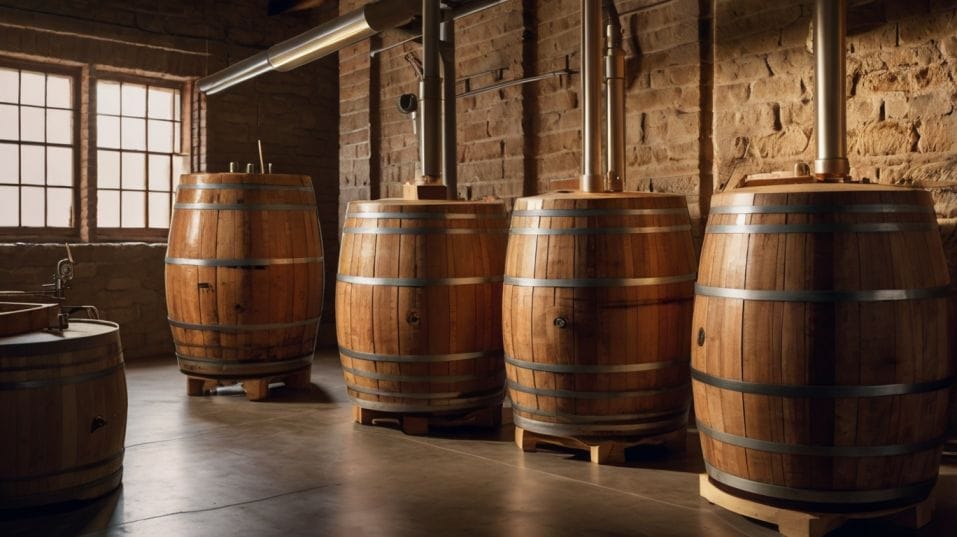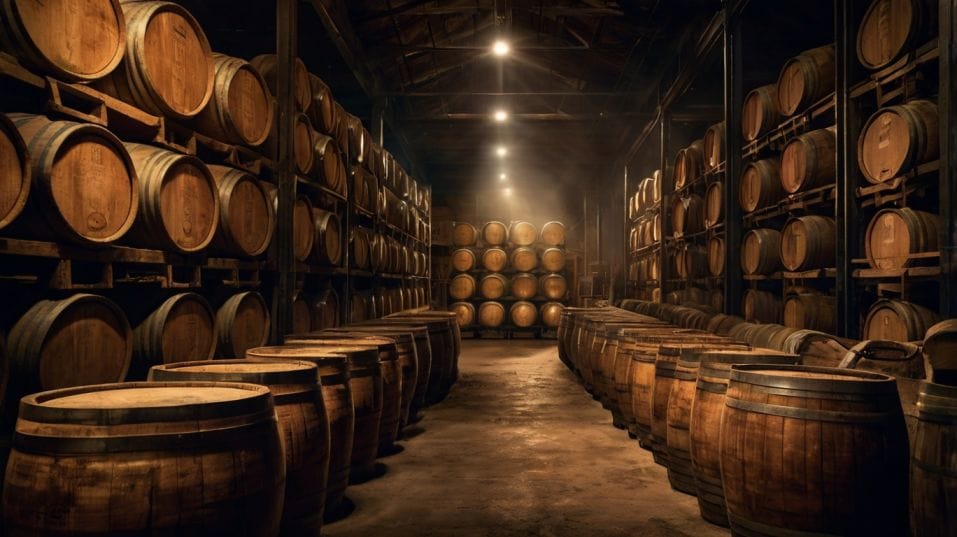What Is Solera Aging (And Who Uses It)?
Curious about whiskey aging? Learn how solera aging creates smoother, deeper, more consistent pours—and how to spot the real deal.

Ever wonder how some whiskeys taste richer, smoother, and more complex than their age suggests? The secret might be solera aging. This quiet, continuous system doesn't just add years—it layers flavor with every pour.
Used by distillers chasing consistency and depth, solera aging blends past and present into every bottle.
If you’re starting your whiskey journey and want to level up fast, understanding this method will sharpen your palate and help you spot truly refined pours.
Solera Aging, Broken Down
Solera aging is a continuous aging system.
Instead of emptying barrels completely and replacing them with new spirit, only a portion of the liquid is drawn at a time—usually from the oldest tier—and the volume removed is replaced with slightly younger whiskey.
That whiskey comes from the tier above, and the system cascades upward from the youngest to the oldest.
This fractional blending process doesn’t restart with each bottling cycle. It evolves. Every time a portion is taken from the bottom tier for bottling, it’s topped off with newer spirit from above.
That means some portion of older whiskey remains in the mix—batch after batch—over the years. The liquid is never fully emptied, so there’s a continuity of flavor that builds gradually over time.
Originally used in Spanish sherry production, solera aging has spread to rum, brandy, and more recently, whiskey.
It’s not just a stylistic flourish; it’s a method built for preserving complexity while smoothing out inconsistencies. And for distillers looking to produce whiskey that feels mature, approachable, and consistent, it’s a powerful tool.
Why Solera Aging Works—And What It Does to Flavor
Solera isn’t just a clever way to stretch old whiskey. It’s a system built for structure—for shaping flavor over time, not just adding age on paper.
When done with intention, solera aging brings depth, balance, and character that’s hard to fake with traditional methods.

Balance Over Boldness
The most immediate effect of solera aging is balance. Instead of getting a whiskey that leans too hot or too tannic or too raw, you get a marriage of extremes.
The brightness of younger spirit cuts through the deeper, heavier notes from older stock. Oak meets orchard fruit. Spice softens into vanilla. Harshness gives way to roundness.
Depth Without the Age Statement
But solera also brings texture. There’s a density to solera-aged whiskey—almost a chewy richness—that comes from the accumulated influence of older spirit.
Even when the whiskey doesn’t list a high age statement, the older components impart depth that goes beyond what you’d get in a standard four- or five-year-old bottle.
Stability You Can Taste
There’s also consistency. In a traditional batch system, every release is vulnerable to environmental variation: heat, barrel differences, aging location, and so on. Solera smooths over those rough patches.
It creates a more stable identity—a recognizable house style that carries across batches. That’s huge for drinkers who want to trust a bottle will taste more or less like it did last time.
A Living System
And then there’s longevity. Since the solera system is constantly evolving, the whiskey doesn’t just get older—it matures as a blend.
Think of it like a sourdough starter. There’s always a bit of the past in every new loaf. Every pull from the solera carries the DNA of previous generations.
That means when you revisit a solera-aged whiskey months—or years—later, it might taste a little different. But it’ll still feel familiar.
How It’s Used (And How It’s Abused)
Solera aging isn’t a protected term. Anyone can slap it on a label, and some brands do, banking on its mysterious aura. So not every whiskey that claims “solera” deserves your attention.
Some distillers use true solera systems: cascading rows of barrels or large, multi-tiered vats that follow the traditional fractional blending method.
Others use a loose interpretation—blending older whiskey with younger whiskey in a single large tank and bottling from it in stages. That’s not technically solera. It’s just batching.
But the real difference isn’t in the equipment—it’s in intent. The best solera-aged whiskeys are shaped by someone with a clear sensory target: a consistent flavor profile with evolving complexity. They’re not trying to mask youth.
They’re trying to build contrast. The younger whiskey brings energy. The older whiskey brings weight. When done right, it doesn’t taste like a compromise—it tastes like refinement.
If you’re paying attention, you’ll notice a few key signs: roundness without muddiness, sweetness without stickiness, maturity without burn.
If a whiskey feels flat or overly blended, it may be a lazy solera. If it feels layered—changing slightly between sips or pours—it’s likely the real deal.
Tasting Smarter With Solera Whiskey
Solera-aged whiskey doesn’t just taste good—it teaches you how to taste better. Because the system evolves slowly, each pour becomes a snapshot in time.
That makes it a sharp tool for training your palate and understanding what real complexity feels like in the glass.
Learn to Spot Subtle Shifts
Solera-aged whiskey is a training ground for your palate. Because the system evolves slowly over time, it invites side-by-side comparisons.
You can buy the same bottling across two or three years and start to track subtle shifts. One year might be brighter. Another might lean into spice or fruit or oak. Those aren’t flaws—they’re clues.
Train Your Sense of Integration
It also sharpens your sense of balance. Solera whiskey often excels at integration, which is the holy grail of blending.
When you’re tasting, try to notice how the whiskey transitions: from nose to palate, from front to back, from sip to finish. Great solera-aged whiskey flows.
Nothing sticks out too far. That teaches you what harmony tastes like—so you can spot when it’s missing elsewhere.
Collect With Confidence
And if you’re collecting, solera-aged bottles offer something most single-barrels don’t: consistency. You’re not gambling on a random cask or release.
You’re buying into a system. That’s especially helpful if you’re trying to build a small collection with strong everyday pours, or if you’re looking for a bottle to return to without surprises.
Just know this: not every solera system ages forever. Some are reset. Some are retired. So if you find one you like, grab a backup. Solera systems evolve—but they don’t last forever.
Final Thoughts
Solera aging isn’t a shortcut—it’s a technique. Done well, it creates whiskey that’s smoother, more complex, and more consistent than its age alone would suggest.
It rewards you for paying attention. For tasting closely. For coming back to the same bottle over time and noticing what’s shifted—and what’s stayed true.
So here’s the move: Find a bottle that uses solera. Taste it slowly. Take notes. Then walk away.
Revisit it in a few weeks. See what’s changed—on your palate and in the whiskey. That kind of intentional tasting is how you move from curious to confident.
Flavor isn’t an accident. And neither is a well-built collection. Start building yours—today.




